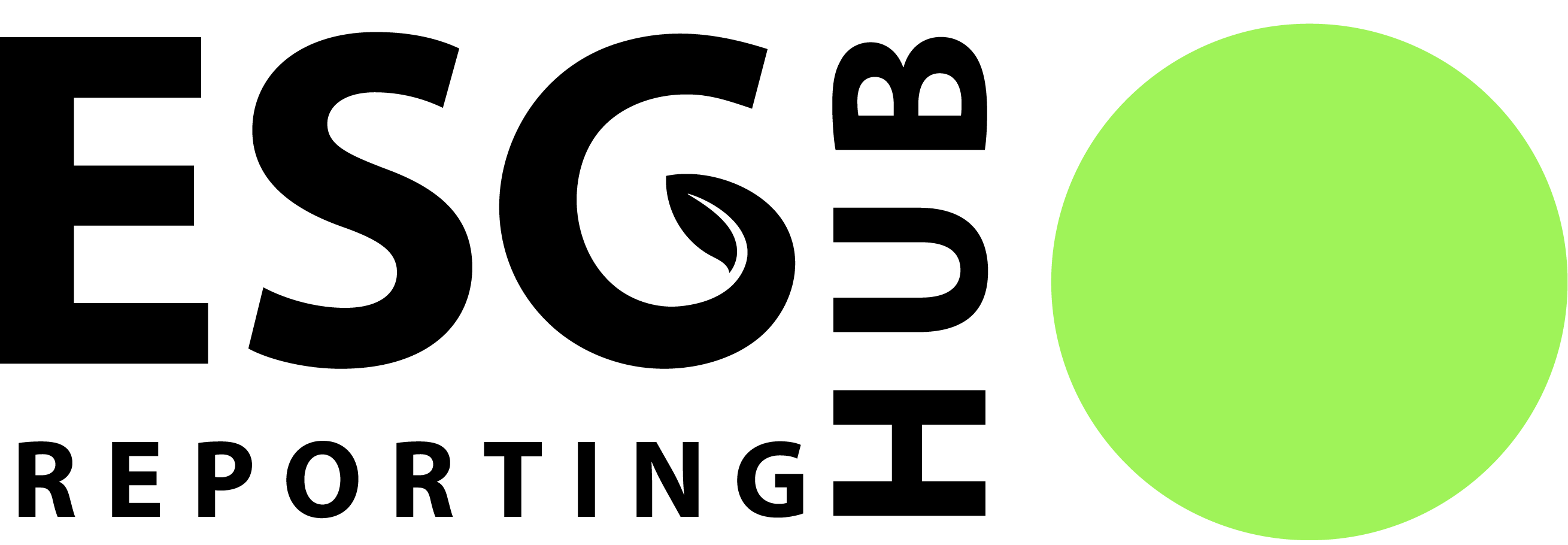European Sustainability Reporting Standards
This article examines the new European Sustainability Reporting Standards and how they will affect many companies both within and outside the EU. Learn about how to determine whether a company is in scope, the differences between these standards and other prominent ones, the interoperability of the standards, and the exemptions that are available.

Introduction
In recent years, numerous businesses have grappled with an abundance of information concerning Environmental, Social, and Governance (ESG) matters. A range of organizations have issued new standards either recommending or mandating that these firms disclose specific ESG information. These entities include the Security Exchange Commission (SEC) with its proposed climate rule, the International Sustainability Standards Board (ISSB), and the Global Reporting Initiative (GRI). Nevertheless, another set of standards, although less widely recognized in some countries like the United States, also possesses the potential to significantly influence companies: the European Union's European Sustainability Reporting Standards (ESRSs).
On April 21, 2021, the European Commission adopted the Corporate Sustainability Reporting Directive (CSRD) as part of its commitment to the European Green Deal.1 The directive tasked the European Financial Reporting and Advisory Group (EFRAG) and the European Commission to draft the ESRSs. Subsequently, these standards were drafted, exposed for comment, and now the EU member states are in the process of transposing the CSRD into their respective national laws which they are required to do by July 2024.2 Upon approval of the CSRD, the ESRSs will come into force for select companies in 2024, necessitating their initial reporting in 2025.3
Due to the breadth and far-reaching implications of these requirements, numerous companies in and out of Europe will be affected, including many that might not have initially anticipated such effects. It is crucial for companies to understand the requirements mandated by these standards, especially if they fall under the scope of CSRD. This will allow them to proactively prepare for what could be a significant and even burdensome task of reporting under this new standard.
What are the ESRSs?
The ESRSs are comprised of 12 standards. Standards 1 and 2 serve as general standards, also called cross-cutting standards, outlining general principles and disclosures. The remaining 10 standards address specific ESG topics like biodiversity, workers in the value chain, and business conduct.4 The standards are grouped into four distinct sections: the cross-cutting standards, the environmental standards, the social standards, and the governance standards.5 A depiction of the sections is shown below.
ESRS 2: General Disclosures is the sole standard that automatically applies to all companies within scope. Companies are required to conduct a materiality assessment to identify what other sustainability topics covered by the remaining standards are material to their operations. For all identified material topics, companies must incorporate the necessary disclosures stipulated by the respective standard.6 This approach enables companies to concentrate their efforts on disclosures that directly impact their operations while bypassing those that are irrelevant to their business activities.
Currently, none of the standards are specific to a particular industry. Nevertheless, the EU is actively developing 41 sector-specific standards. Therefore, companies should expect further disclosure obligations.7 This is similar to the path already taken by the ISSB whose new reporting standards direct reporters to consider the industry-specific SASB standards, and it stands in contrast to the SEC's proposed climate rule, which incorporates industry-specific disclosures solely within the context of the GHG emissions intensity metric.8
Many companies will likely be apprehensive about dealing with so many new disclosures. Fortunately, the ESRSs do offer certain provisions that grant relief, albeit on a limited basis. For instance, all companies can elect to omit the anticipated financial effects of the environmental disclosures in the first year and specific disclosures and data points from the governance standard. Additionally, companies with fewer than 750 employees are granted additional exemptions from certain disclosures for the first two years. While this will provide some relief to companies, it is essential to note, however, that during the materiality assessment process, all distinct disclosures from each standard must be considered regardless of the exemptions a company is eligible for. Given this consideration and the imminent reporting deadlines, companies should waste no time in preparing to gather the relevant data needed to report on all foreseeable material disclosures. 9
How It Differs from the SEC and ISSB Regulations
Numerous companies have begun preparing to report under the SEC's proposed climate rule or the ISSB’s new standards; however, it is crucial to note that these standards diverge significantly from the ESRSs in various aspects. One of the primary distinctions is in the breadth of the standards. The SEC’s rule revolves primarily around climate-related matters, and the ISSB’s exposure draft comprises two standards: one addressing general principles and disclosures, and another focusing on climate-specific topics. Also, both the SEC’s rule and the ISSB’s exposure draft prioritize the investor as the primary stakeholder. In contrast, the ESRSs adopt a much broader approach, comprising 12 distinct standards that underscore the importance of multiple stakeholders. Furthermore, the standards differ in more fundamental ways. For instance, the ISSB and SEC standards only require companies to consider the financial impacts when determining materiality. Conversely, the ESRSs call for companies to consider the environmental and societal impacts as well as the financial impacts related to sustainability issues.10 This is often referred to by people in practice as double materiality.
These standards also vary in terms of the assurance required by their respective regulatory bodies. The SEC’s rule would only mandate that companies receive assurance on the extent of their scope 1 and 2 emissions. The ISSB does not impose any mandatory requirement for companies to secure assurance on their sustainability reports. However, local jurisdictions that adopt the standards could choose to make it obligatory. Concerning the ESRSs, companies will be required to obtain limited assurance (resembling a financial statement review) for their sustainability reports until 2028. After 2028, if further proposed legislation is passed, they will be required to obtain reasonable assurance (to learn more about auditing of climate-related disclosures see our article here). 11
How to Determine if a Company Must Report under the ESRSs
The EU has released guidelines that outline which companies must adhere to the ESRSs for reporting. It is probable that the range of companies falling within the scope is more extensive than initially anticipated by reporters. The CSRD requires all companies operating within the European Union and their subsidiaries, even if those subsidiaries are located in other parts of the world, to report under the ESRSs if they satisfy the following criteria:
Subsidiaries of non-EU parent companies are also obliged to report if they meet these specified requirements.13 14
At first glance, this might not appear to have a significant impact on companies located outside the EU; however, the CSRD can encompass non-EU parent companies within its scope as well. Non-EU parent companies that meet a different set of scoping requirements will need to report under the ESRSs. A non-EU parent company falls within scope if it has generated over €150 million in net turnover from the EU over the past two consecutive years and meets either of the following criteria:
- One of its subsidiaries fulfills the aforementioned general scope criteria.
- The company has at least one branch in the EU that had a net turnover greater than €40 million in the previous year.
When a non-EU parent company meets these criteria, its entire consolidated group is required to report under the ESRSs. It is anticipated that a new exposure draft will soon be released outlining reduced disclosures in this scenario. Nonetheless, the company’s subsidiaries meeting the general scope criteria will still be obliged to report under the standard ESRSs.15
Furthermore, the number of non-EU companies impacted is substantial. According to Refinitiv, a financial data firm, an estimated 10,000 foreign companies will need to comply with these new standards. It's worth noting that approximately one-third of these companies are expected to be based in the United States.16 Additionally, even smaller companies with no subsidiaries or overseas sales may find themselves affected. The Boston College for Corporate Citizenship commented on this, stating “Notably, many more companies—in the U.S. and abroad—that fall outside the CSRD’s official scope will still find themselves affected when their EU partners are looking to them, as links in the value chain, for more detailed sustainability information.”17 Essentially because the ESRSs require companies to consider their value chain in their disclosures, such as scope 3 emissions, both EU and non-EU companies falling within scope will soon need to obtain sustainability data from their suppliers. Therefore, all companies that do business with in-scope companies should be attentive to these standards and begin strategizing how to gather the requisite data so that they will be prepared to provide it when asked.
Conclusion
The ESG reporting landscape is undergoing rapid transformation, particularly in light of the impending adoption of the European Union’s new standards. These standards are more granular in detail and larger in breadth than most, if not all, other standards currently being proposed. Moreover, their impact extends beyond the EU, affecting companies worldwide engaged in business within the EU’s boundaries and those serving as suppliers to such companies. The effective dates for these new standards are rapidly approaching, with the first companies affected required to report on fiscal year 2024 data. Companies should promptly determine if they will be mandated to report under these standards or if they will be called upon to provide sustainability information to other entities. In either case, a careful assessment of operations and early preparation will be necessary to meet the demands of the ESRSs.
1. KPMG: Corporate Sustainability Reporting Directive
2. Matheson: Proposed Changes to the Thresholds for Application of CSRD
4. BC CCC: THE CSRD: CORPORATE SUSTAINABILITY REPORTING DIRECTIVE
7. KPMG: Get Ready for European Sustainability Reporting Standards
8. KPMG: Comparing sustainability reporting requirements
10. KPMG: Comparing sustainability reporting requirements
11. KPMG: Comparing sustainability reporting requirements
13. KPMG Financial Reporting View: Impact of EU ESG Reporting on US Companies
14. European Commission: Adjusting SME Size Criteria for Inflation
15. KPMG Financial Reporting View: Impact of EU ESG Reporting on US Companies
17. BC CCC: THE CSRD: CORPORATE SUSTAINABILITY REPORTING DIRECTIVE
18. KPMG Financial Reporting View: Impact of EU ESG Reporting on US Companies
19. KPMG: Get Ready for European Sustainability Reporting Standards


